Franz Josef Land is an archipelago of 191
islands located in the far north of Russia.
It is largely uninhabited. It is in the Arctic
Ocean north of Novaya Zemlya and east of
Spitsbergen.
At latitudes between 80.0 and 81.9 north, it forms the most northerly group of islands in Europe and the whole of Eurasia. The archipelago is only 550 statute miles (885 km) from the North Pole, closer than all land masses except for Canada's Ellesmere Island and Greenland.
The archipelago was discovered in August 1873 by the Austro-Hungarian polar expedition of Payer and Weyprecht, financed by H Wilczek. After exploration of its southern islands it was named to the honour of the Austrian emperor Franz Josef I. In 1895/96, Fridtjof Nansen supplemented the explorations. In 1926 the islands were taken over by the Soviet Union, and a few inhabitants came for research and military purposes. Access by ships is possible only for a few summer weeks and requires a special permit.
Zeigler island
This island was named after New York businessman William Zeigler, leader of the 1901 expedition. The Austrian observing site Payer-Weypricht was established around the turn of the century. The highest point on Ziegler Island is 554 m.
At latitudes between 80.0 and 81.9 north, it forms the most northerly group of islands in Europe and the whole of Eurasia. The archipelago is only 550 statute miles (885 km) from the North Pole, closer than all land masses except for Canada's Ellesmere Island and Greenland.
The archipelago was discovered in August 1873 by the Austro-Hungarian polar expedition of Payer and Weyprecht, financed by H Wilczek. After exploration of its southern islands it was named to the honour of the Austrian emperor Franz Josef I. In 1895/96, Fridtjof Nansen supplemented the explorations. In 1926 the islands were taken over by the Soviet Union, and a few inhabitants came for research and military purposes. Access by ships is possible only for a few summer weeks and requires a special permit.
Zeigler island
This island was named after New York businessman William Zeigler, leader of the 1901 expedition. The Austrian observing site Payer-Weypricht was established around the turn of the century. The highest point on Ziegler Island is 554 m.
Rubini Rock, Hooker Island
The most spectacular bird cliff in the archipelago. The towering rock is a columnar basalt, volcanic rock similar to that found in the Giant’s Causeway in Ireland and also on the Island of Staffa in Scotland. The natural joints in the rock form narrow ledges where birds nest and lay a single egg (not enough space for any more).
The most spectacular bird cliff in the archipelago. The towering rock is a columnar basalt, volcanic rock similar to that found in the Giant’s Causeway in Ireland and also on the Island of Staffa in Scotland. The natural joints in the rock form narrow ledges where birds nest and lay a single egg (not enough space for any more).
Tikhaya Bukhta, Hooker Island
Georgiy Sedov wintered here in 1913-1914, and two adjacent memorials commemorate this. The first Polar Station was established on the same site on 29th August 1929 and named Sedova. It closed in 1963, but summer parties occasionally use two of the intact buildings. There are graves from the Sedov expedition and of an aviator from the station.
Georgiy Sedov wintered here in 1913-1914, and two adjacent memorials commemorate this. The first Polar Station was established on the same site on 29th August 1929 and named Sedova. It closed in 1963, but summer parties occasionally use two of the intact buildings. There are graves from the Sedov expedition and of an aviator from the station.
Cape Flora, Northbrook Island - weather too foggy to go here
This is the site of Leigh-Smith’s wintering quarters 1881-82. There are also remains of the Jackson-Hamsworth expedition 1894-97. Nearby is the place where Nanson and Jackson met on 17th June 1896, and the grave of June Mouatt of Jackson’s expedition. Wellman moved some of Jackson’s buildings to Cape Tegetthoff in 1898, others were used by the Ziegler-Fiala expedition, and used as fuel by Georgiy Sedov’s expedition. Memorials exist for the three members of the Duke of Arbuzzi’s expedition (a granite stele, erected in 1901), to the visit of Yermak in July 1901, (a wooden post), and a 2005 memorial cross to the Sveta Anna expedition from which only Valerian Albanov and Aleksandr konrad survived.
This is the site of Leigh-Smith’s wintering quarters 1881-82. There are also remains of the Jackson-Hamsworth expedition 1894-97. Nearby is the place where Nanson and Jackson met on 17th June 1896, and the grave of June Mouatt of Jackson’s expedition. Wellman moved some of Jackson’s buildings to Cape Tegetthoff in 1898, others were used by the Ziegler-Fiala expedition, and used as fuel by Georgiy Sedov’s expedition. Memorials exist for the three members of the Duke of Arbuzzi’s expedition (a granite stele, erected in 1901), to the visit of Yermak in July 1901, (a wooden post), and a 2005 memorial cross to the Sveta Anna expedition from which only Valerian Albanov and Aleksandr konrad survived.
Wilczek Island
On 1st November, 1873 at noon, in the dim light of the polar winter the explorers on the ship, Tegetthoff, set foot on new land. The sun had set a few days earlier and the second period of polar night had already begun. They named it Wilczek Island, after the illustrious supporter of the expedition. At that time the island was covered by thick glacier ice. Despite this, the explorers felt as though thjey were entering paradise and were thankful for their fortunate fate what at long last they could step on solid ground. On the following day explorer, Payer, took possession of the island.
On 1st November, 1873 at noon, in the dim light of the polar winter the explorers on the ship, Tegetthoff, set foot on new land. The sun had set a few days earlier and the second period of polar night had already begun. They named it Wilczek Island, after the illustrious supporter of the expedition. At that time the island was covered by thick glacier ice. Despite this, the explorers felt as though thjey were entering paradise and were thankful for their fortunate fate what at long last they could step on solid ground. On the following day explorer, Payer, took possession of the island.
Cape Tegetthoff, Hall Island
In 1873 an Austro-Hungarian ship taking part in polar-region research (First International Polar Year) was beset in the ice off Novaya Zemlya and started drifting with the Arctic sea ice. After one winter in the ice, as the fog lifted the men, under Julius von Payer and Carl Weyprecht, were astounded to sight land. This was the first discovery of what was to become the Franz-Josef Archipelago, named after the Austro-Hungarian Emperor. The land they sighted is Cape Tegetthoff, named after their ship, but they actually landed first on Wilczek Island.
In 1873 an Austro-Hungarian ship taking part in polar-region research (First International Polar Year) was beset in the ice off Novaya Zemlya and started drifting with the Arctic sea ice. After one winter in the ice, as the fog lifted the men, under Julius von Payer and Carl Weyprecht, were astounded to sight land. This was the first discovery of what was to become the Franz-Josef Archipelago, named after the Austro-Hungarian Emperor. The land they sighted is Cape Tegetthoff, named after their ship, but they actually landed first on Wilczek Island.
Crates left by the film crew after filming
'Polar Bear Special'
Click on an image to see a larger version
and a slideshow











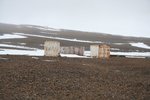
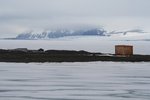
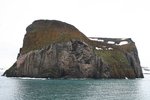
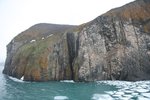
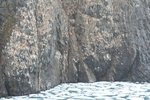
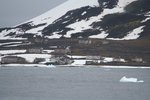
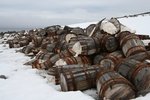
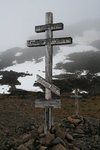
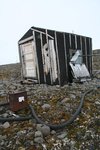
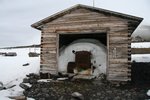
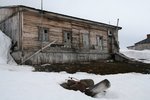
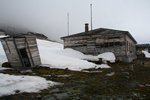
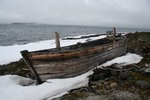
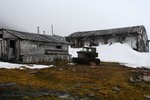
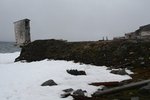
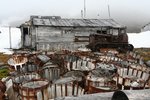
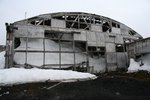
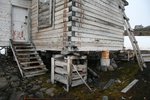

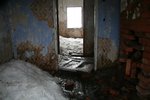
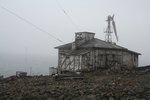
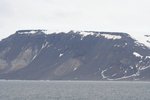
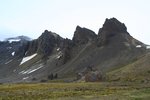
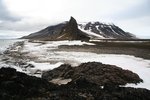
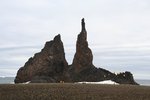
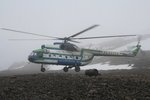
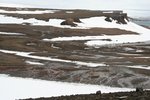
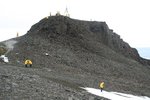
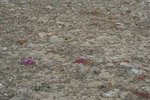
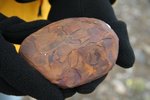
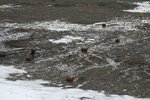
.JPG/img/IMG=_7173(edited)-thumb-150x150.JPG)